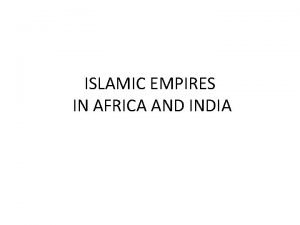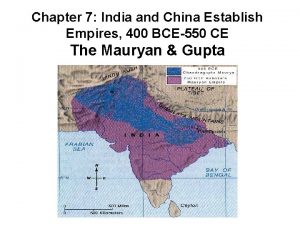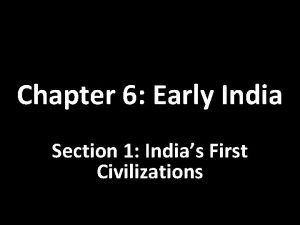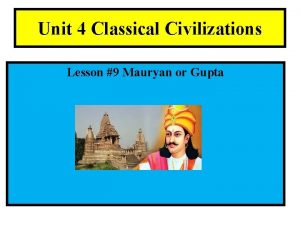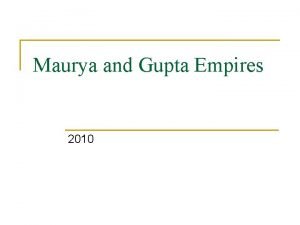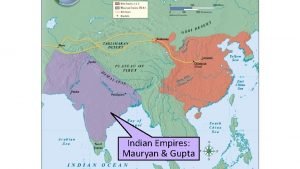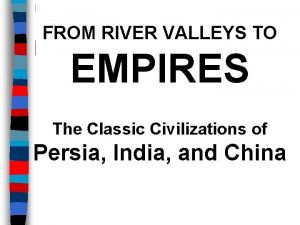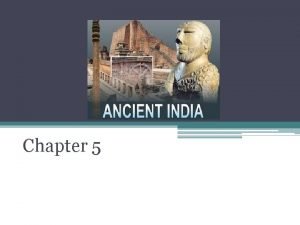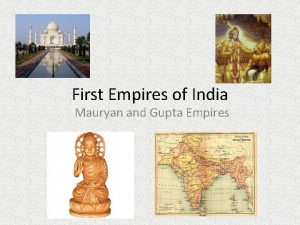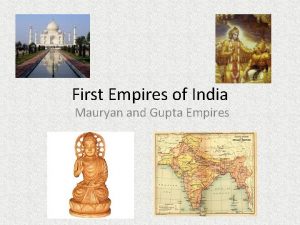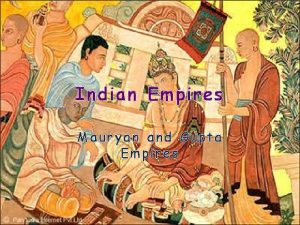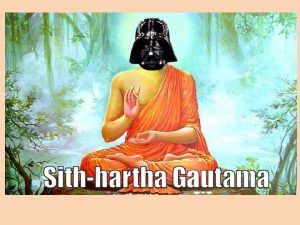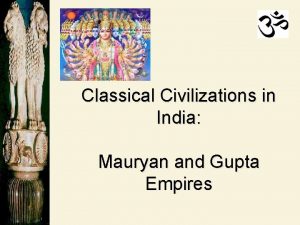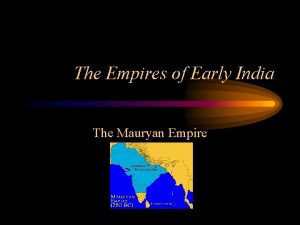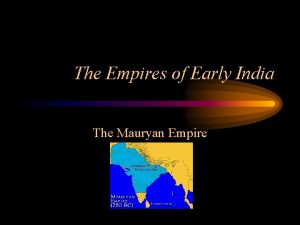New Empires in India Main Ideas The Mauryan












- Slides: 12

New Empires in India Main Ideas • The Mauryan dynasty flourished under Asoka. • The Kushan kingdom prospered. • The Gupta Empire left a lasting legacy through literature, architecture, and science. Key Terms • Silk Road • pilgrim Click the mouse button or press the Space Bar to display the information.

New Empires in India People to Identify • Asoka • Kalidasa • Faxian • Aryabhata • Huns Places to Locate • Persia • Syria • Changan • Mediterranean Sea • Antioch Click the mouse button or press the Space Bar to display the information.

New Empires in India Preview Questions • How did the Kushan kingdom become prosperous? • In what way did early Indian literature influence the Indian people? Click the mouse button or press the Space Bar to display the information.

New Empires in India Preview of Events

Click the Speaker button to listen to the audio again.

Committed to spreading impartiality, cheerfulness, truthfulness, and goodness throughout his kingdom, Asoka once said, “All men are my children. As for my own children, I desire that they may be provided with all the welfare and happiness of this world and of the next, so do I desire for all men as well. ”

The Mauryan Dynasty • After 400 B. C. , India faced new threats from the west–first from Persia, then from Greece and Macedonia, under Alexander the Great. • Alexander invaded northern India in 327 B. C. • He left quickly, but his invasion gave rise to the first Indian dynasty. (pages 81– 82) Click the mouse button or press the Space Bar to display the information.

The Mauryan Dynasty (cont. ) • Chandragupta Maurya, who ruled from 324 to 301 B. C. , founded the new Indian state. • This first Indian Empire was highly centralized and governed by an ideal of exercising power impartially. • The empire was divided into provinces, ruled by governors. • The king had a large army and secret police. (pages 81– 82) Click the mouse button or press the Space Bar to display the information.

The Mauryan Dynasty (cont. ) • The Mauryan Empire flourished under the reign of Asoka, Chandragupta Maurya’s grandson. • Most consider Asoka the greatest Indian ruler ever. • He converted to Buddhism and governed in accordance with Buddhist ideals. • His kindness was legendary. • He set up hospitals for people and animals, and he ordered a system of shade trees and shelters for travelers. (pages 81– 82) Click the mouse button or press the Space Bar to display the information.

The Mauryan Dynasty (cont. ) • India flourished economically under Asoka. • It became an important crossroads in a commercial network from the Pacific Rim to Southwest Asia and the Mediterranean Sea. • Asoka died in 232 B. C. • The empire then declined. • The last Mauryan ruler was killed in 183 B. C. , and India fell into disunity. (pages 81– 82) Click the mouse button or press the Space Bar to display the information.

The Mauryan Dynasty (cont. ) The Buddha taught that people should have compassion for all sentient (feeling) creatures and always try to not harm them. What in Asoka’s way of governing embodies this idea? Compassion motivated him to set up the hospitals for people and animals, and to provide shelter and shade for travelers. (pages 81– 82) Click the mouse button or press the Space Bar to display the answer.

 Venn diagram of mauryan and gupta empires
Venn diagram of mauryan and gupta empires How are maritime and land based empires similar
How are maritime and land based empires similar India empires
India empires Chapter 7 section 1 india's first empires
Chapter 7 section 1 india's first empires Chapter 7 india and china establish empires
Chapter 7 india and china establish empires Chapter 7 section 1 india's first empires
Chapter 7 section 1 india's first empires Mauryan empire
Mauryan empire The mauryan empire
The mauryan empire Mauryan and gupta empire map
Mauryan and gupta empire map Why mauryan empire decline
Why mauryan empire decline Mauryan people
Mauryan people How did the mauryan empire’s army help to promote trade?
How did the mauryan empire’s army help to promote trade? Top of the caste system
Top of the caste system


